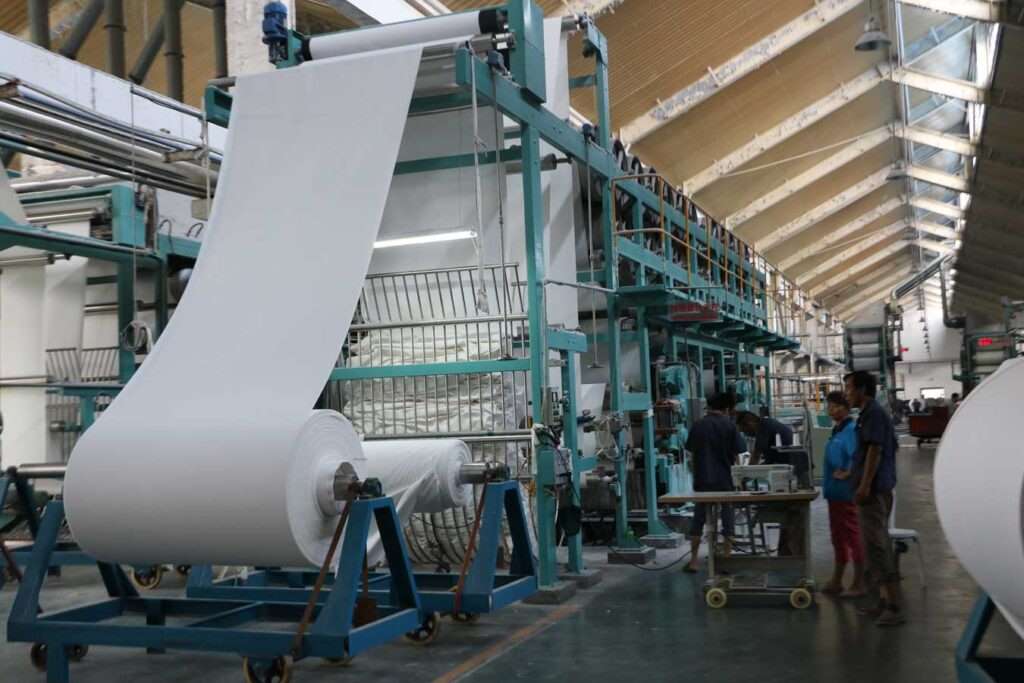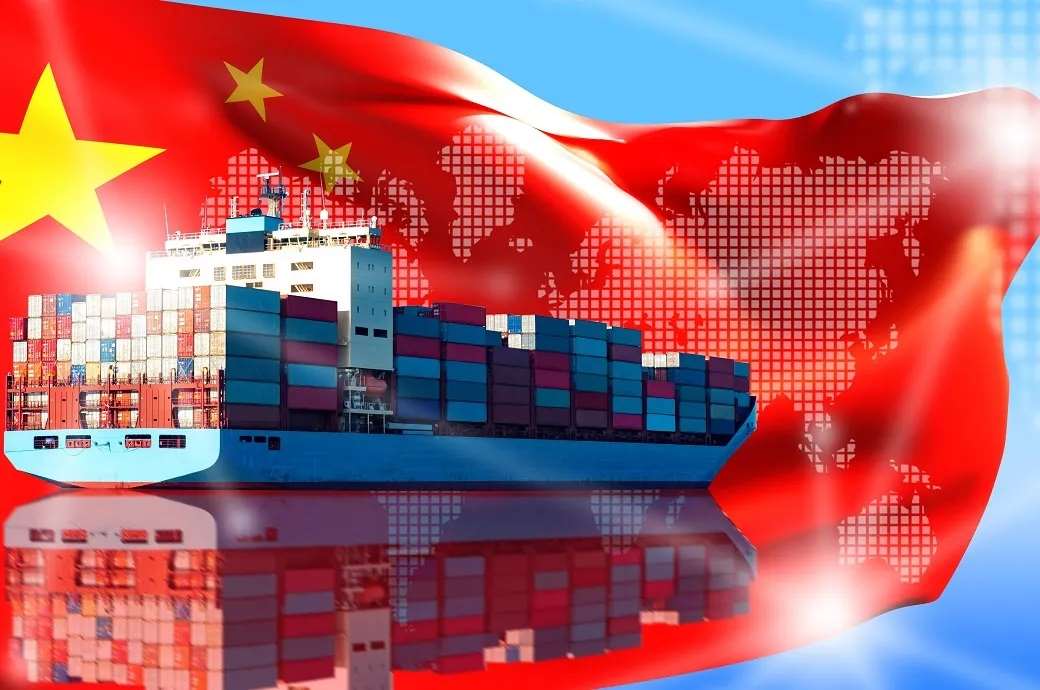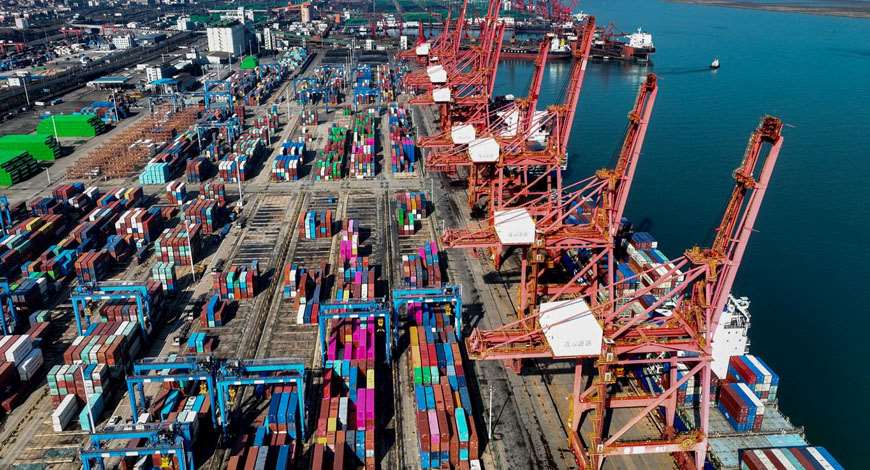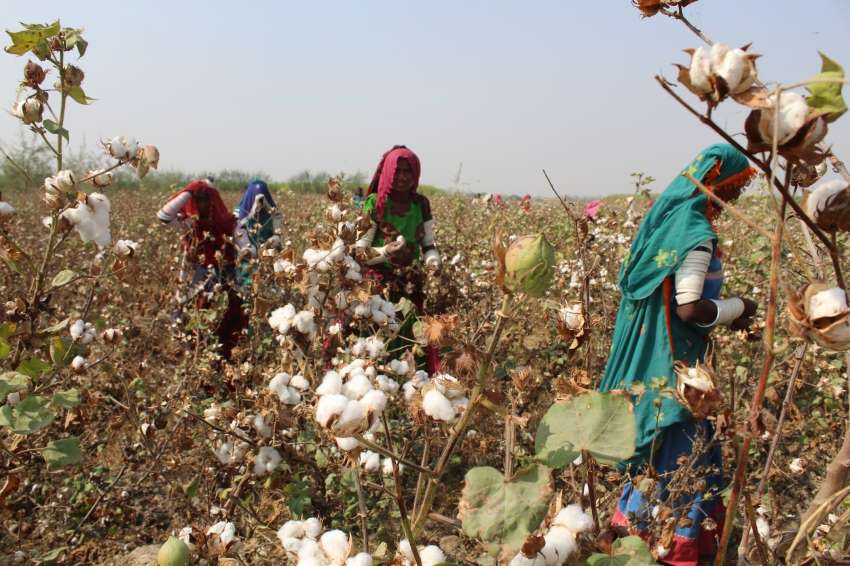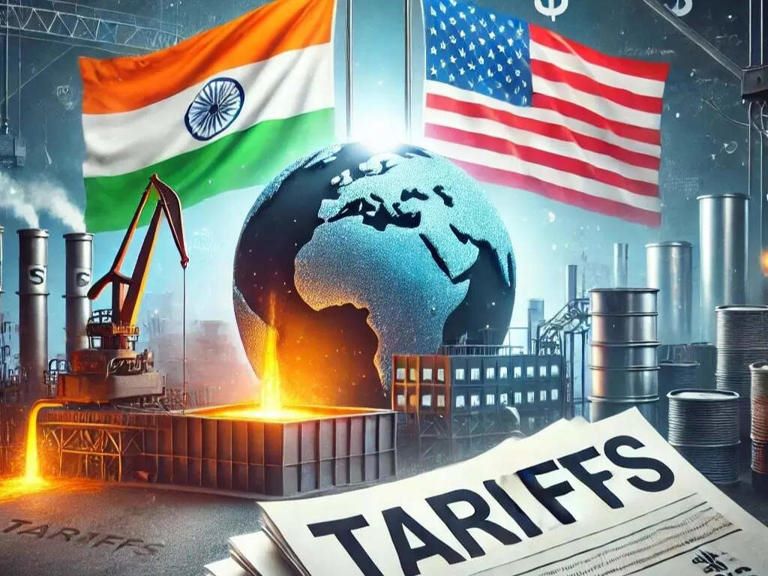FW
In collaboration with the London School of Trends (LST) and the High Commission of India in London, the New York Institute of Fashion (NIF Global) unveiled a stunning fashion showcase at London Fashion Week (LFW). Titled, ‘Indian Renaissance: Heritage Meets Sustainability,’ this year’s showcase celebrated India's rich textile heritage while pushing the boundaries of modern, eco-conscious design.
Building on the success of last year's ‘Roots to Runway,’ the 2025 showcase featured emerging designers from NIF Global's pan-India centers, blending traditional Indian craftsmanship with contemporary Western aesthetics. These young visionaries set a new standard for sustainable, global fashion, proving that heritage techniques and responsible fashion can coexist beautifully on the international stage.
The ‘Indian Renaissance’ collection celebrated a cross-cultural exchange, seamlessly weaving Indian handloom textiles, heritage embroidery, and age-old printing techniques into minimalist, Western-inspired silhouettes. Designed with sustainability at its core, the collection showcased eco-friendly materials such as organic cotton, khadi, handloom silk, and recycled fabrics, ensuring a reduced environmental footprint; a fusion of heavy, winter-friendly textiles with breathable weaves, making garments adaptable to global climates, traditional hand embroidery and surface ornamentation reimagined through contemporary construction and tailoring and avant-garde silhouettes, bringing together cultural depth and modern elegance.
The grand finale of the showcase featured an electrifying Bhangra performance by the Indian models on the runway, bringing the audience to their feet. The high-energy celebration perfectly captured the fusion of heritage and modernity, making for a spectacular wrap-up to the NIF Global x LST showcase.
Attended by global fashion leaders, influencers, and industry insiders, the event also highlighted the role of NIF Global x LST in mentoring the next generation of designers, equipping them with the tools to navigate the ever-evolving global fashion landscape. Through its strategic alliance with the London School of Trends (LST), NIF Global provides students with the right inspiration and motivation from style icon Ananya Panday.
Lotte Department Store plans to host a pop-up shop for the K-fashion brand ‘The Barnnet’ at the Lotte World Mall in Jamsil, marking the first time a domestic retailer has showcased the brand in South Korea.
The pop-up shop will be located on the first basement level of Lotte World Mall in Jamsil, Seoul, and will will offer an exclusive first look at The Barnnet’s new Spring/Summer (S/S) collection. More than 200 items, including bags, hats, and accessories, will be available in one convenient location.
Among the featured products are work jackets priced at 250,000 won, zip-up knitwear for 198,000 won, and ball caps for 42,000 won.
Founded in 2021, The Barnnet is a rising brand that has already made a name for itself internationally. The brand recently held a successful pop-up at Isetan Department Store in Shinjuku, Tokyo, where it generated 300 million won in sales in just one week. Recognized as a promising K-fashion brand with strong global appeal, The Barnnet has garnered significant attention in Japan.
The brand’s popularity is largely attributed to its unique design approach, which blends trendy classic styles with intricate details, resonating with young consumers in their 20s and 30s.
The pop-up shop’s interior is designed with a sophisticated, vintage-inspired aesthetic. The entrance features floral arrangements and arched spaces reminiscent of European antique boutiques. Soft pastel tones and premium fabrics create a warm and inviting atmosphere for shoppers.
To celebrate The Barnnet’s first pop-up in South Korea, customers will receive a photo booth pass with any purchase. On weekends, those who spend over 50,000 won in a single day will receive fresh flowers, available in limited quantities on a first-come, first-served basis. Additionally, customers who spend more than 400,000 won will be gifted an exclusive shoulder bag while supplies last.
Driven by heightened demand from the US and Europe, and a favorable currency depreciation, Bangladeshi T&A firms experienced a growth in revenue and profit during Q2, FY25 spanning October-December 2024. According to a ‘Textile Sector Update’ by CAL Securities, listed textile companies achieved a 20 per cent Y-o-Y revenue growth, reaching Tk44 billion during the quarter.
Revenues of apparel exporters grew by 43.1 per cent Y-o-Y Contributing nearly half of the sector's revenue, spinning mills reported a 23.5 per cent growth. Dyeing, fabric, and denim segments also experienced growth, while the home textile segment saw a slight decline.
The sector's net profit increased by 72 per cent Y-o-Y to Tk2.2 billion, with net profit margins improving to 5 per cent from 3.5 per cent. Lower cotton prices were a key factor in this profitability boost, despite the impact of elevated interest rates.
Bangladesh's ready-made garment (RMG) exports grew by 12 per cent in H1, FY25, despite political and labor disruptions. This recovery was fueled by increased demand from developed markets, supported by declining inflation and monetary easing.
Looking ahead, CAL Securities predicts, higher US tariffs on Chinese imports will shift more orders to emerging markets. However, Bangladesh needs to focus on value addition to remain competitive. While US apparel imports increased, Bangladesh's market share grew only slightly, indicating a need for diversification and high-value product expansion.
Segment-wise, Malek Spinning led the spinning sector with a 24 per cent revenue growth. Esquire Knit Composite dominated the apparel segment with an 80 per cent revenue increase and a profit turnaround. Envoy Textile led the denim segment with a 22 per cent revenue growth and a 158 per cent profit surge. Other notable performers included Square Textile, Matin Spinning, Queen South Textile, Monno Fabrics, Rahim Textile, Paramount Textile, Fareast Knitting, Shepherd Industries, and ML Dyeing. Conversely, ShaSha Denim, Evince Textile, and Hwa Well Textile underperformed. This robust performance signals a positive outlook for Bangladesh's textile industry, contingent on strategic adjustments to capitalize on global opportunities.
New York-based global designer, manufacturer, and distributor of apparel and accessories, United Legwear & Apparel Co (ULAC) has appointed Tony Lucia as the new President of its wholly owned subsidiaries, ULAC Europe BV and ULAC UK. Headquartered in the Netherlands and London, these subsidiaries oversee the company's European and UK operations.
Having an extensive experience in the industry, Lucia has previously served as the CEO and President (North, Central, and South America) for prominent fashion brands including Hugo Boss, Escada, and G-Star Raw. He also held key executive sales positions at Giorgio Armani/GFT, Donna Karan, and Andrew Fezza.
In his new position, Lucia will lead the expansion of key brands such as Scotch & Soda, Ted Baker (e-commerce), Hurley, and Skechers. He will work closely with ULAC's sales teams in the UK, Europe, and the US to strengthen retailer relationships, refine market strategies, and drive omnichannel sales growth. His expertise in operations, P&L management, supply chain optimization, and global e-commerce will be crucial to ULAC's growth.
Christopher J Volpe, COO/CFO, ULAC, says, Lucia’s deep industry knowledge and strategic vision are a perfect fit for ULAC's commitment to innovation and global growth. His proven leadership will help the company drive sustainable growth for brands across the UK, Europe, and beyond, he adds.
With Lucia's appointment, ULAC aims to expand its presence in Europe and the UK, increasing brand reach, and delivering high-quality apparel and accessories to a global customer base.
Leaders from the Indian textile and apparel (T&A) industry are urging the government to enter into ‘zero for zero’ tariff deal with the United States to protect strategic products from the reciprocal tariffs to be imposed by the US starting April 2, 2025.
Chandrima Chatterjee, Secretary General, Confederation of Indian Textile Industry (CITI) opines, US President's reciprocal tariff policy could help India strengthen export growth to the US.
Currently, India holds a mere 6 per cent share of the US apparel import market. Prabhu Damodaran, Convenor, Indian Texpreneurs Federation, emphasizes, even a 4 per cent increase would translate to a significant $3 billion opportunity.
India ranks as the third-largest supplier of T&A products to the US, behind China and Vietnam, with a 10.8 per cent market share of the $118.4 billion US import market. In 2024, US textile and apparel imports from India totaled $10.8 billion, while US exports to India were only $0.41 billion. India's imports primarily consist of fiber products, with cotton comprising 50.6%. K. Venkatachalam, Chief Advisor, Tamil Nadu Spinning Mills Association, stresses that current cotton shortages in India, due to crop failures, should be leveraged to gain trade advantages.
As the world's largest apparel importer, the US is a crucial export destination for India, accounting for 35 per cent of Indian apparel exports. Mithileshwar Thakur, Secretary General, AEPC, reports, in 2024, that apparel exports to the US increased by 11.2 per cent reached $5.2 billion
The T&A industry advocates for attention to manmade fibers, an emerging export sector. The AEPC identifies products with over $100 million in US exports and PLI scheme products as strategic for trade negotiations. In 2024, the US imported $79.26 billion in apparel, with China, Vietnam, Bangladesh, and India holding market shares of 21 per cent, 19 per cent, 9.3 per cent, and 5.9 per cent respectively.
The state government has approved eight additional proposals from entrepreneurs to establish mini textile parks in the Karur district, according to V Senthilbalaji, Electricity Minister.
Inaugurating a mini textile park in Kullampatti, alongside R Gandhi, Minister for Textiles and Handlooms, Senthilbalaji stated, a group of three entrepreneurs invested Rs 59 million ($710,000 approx.) in the project under the Tamil Nadu Mini Textile Park Scheme. Of the total expenditure, the state government will provide Rs 22 million ($265,000 approx.) in grants to the entrepreneurs. Of this amount, Rs 13.2 million ($160,000 approx.) has already been disbursed. The scheme is designed to share a portion of the costs associated with establishing these mini parks.
The state received ten more mini textile park proposals from Karur. Of those, eight have been approved, and the entrepreneurs have begun construction. Under the scheme, the state will cover 50 per cent of the expenses for establishing common facilities, infrastructure, and factory buildings. The maximum grant will be Rs 25 million ($300,000 approx.) for each park.
Later, Senthilbalaji and Gandhi inaugurated a common facility center in Velusamypuram, intended to benefit handloom weavers. A total of Rs 4.589 million ($55,000 approx.) was spent to establish the facility on a 2,430 sq ft site.
Even though handled by the Cotton Corporation of India (CCI), the Indian government's cotton procurement has reached 9.4 million bales, cotton prices continue to remain below the government-set Minimum Support Price (MSP) due to weak market demand. According to Lalit Kumar Gupta, Managing Director, says, procurement is going on across all states.
Data compiled by the Cotton Association of India (CAI), shows, cumulative market arrivals for the 2024-25 crop season totaled over 21.6 million bales (170 kg each) by March 1, 2025. CAI recently lowered its crop estimate to 30.175 million bales, while initial government estimates were 29.9 million bales.
The market for raw cotton and pressed bales is struggling due to weak demand, notes Pradeep Jain, President, Khandesh Ginners Association. Raw cotton prices are currently between ₹6,500 and Rs 7,000 per quintal, below the MSP level of Rs 7,121 (medium stable). Market arrivals of raw cotton have decreased because farmers, who have 10-15 per cent of their crop remaining, are choosing to hold onto their produce due to the low prices. However, the cottonseed market is showing some improvement, with prices rising Rs 200-300 per quintal to Rs 3,300-3,400, he adds.
Atul Ganatra, President, CAI, reports, daily arrivals have dropped below 90,000 bales, with CCI purchasing 40,000-50,000 bales. Ginners are barely receiving 40,000-45,000 bales, while mills need 100,000 bales daily. So, mills have started slightly increasing their purchases to build inventory at these current prices. However, mills are not buying at higher prices and are sticking to their own price points, he explains.
Furthermore, Ganatra states, mills prefer to maintain short-term inventories, buying only for one month at a time. Every mill wants to buy for one month to keep their operations running. They have confidence because CCI holds over 9 million bales, he adds.
While there's a perception that prices will stabilize once arrivals slow down, Ganatra believes Indian cotton prices won't rise unless ICE futures (the global cotton futures market) increase. Pressed cotton prices are currently hovering between Rs 53,000 and Rs 54,500 per candy, depending on quality.
Highlighting the unique challenges in the current market, Ramanuj Das Boob, a sourcing agent in Raichur, says, despite good crop yields from a slightly reduced planting area, prices remain stagnant between Rs 52,500 and Rs 54,000, creating market uncertainty. Cheaper imported cotton is further restraining domestic prices, with Indian mills having contracted approximately 2.9 million bales for import this year, he notes.
The National Council of Textile Organizations (NCTO) has welcomed former President Donald Trump’s decision to temporarily suspend 25 percent penalty tariffs on qualifying imports from Mexico and Canada under the US-Mexico-Canada Agreement (USMCA).
NCTO President and CEO Kim Glas expressed appreciation for the pause, emphasizing the need for a swift resolution to ongoing trade negotiations linked to immigration and fentanyl trafficking concerns.
Glas highlighted the critical role of USMCA in supporting a robust North American textile supply chain, which sustains 1.6 million jobs and facilitates $20 billion in two-way trade. The agreement enables US textile exports, totaling $12.5 billion annually, to be transformed into finished products in Mexico and Canada before returning to the US. This interconnected system strengthens domestic manufacturing and reduces reliance on Asian supply chains.
Imposing tariffs on compliant USMCA imports, Glas warned, would harm the US textile sector, weaken North American trade partnerships, and disrupt military supply chains. She urged the administration to pursue a balanced approach that exempts qualifying USMCA goods from penalty tariffs and addresses the de minimis loophole, which allows tariff-free low-value shipments that disadvantage domestic producers.
NCTO reaffirmed its commitment to working with Trump’s administration on trade policies that bolster domestic manufacturing. Glas stressed the importance of preserving the integrity of the North American supply chain, ensuring US competitiveness, and fostering a stronger domestic industry.
Jeanologia celebrates its 30th anniversary in 2025 with innovative NextGen Summit, uniting top global denim manufacturers to shape the industry's future. The Spanish company hosted the event at its Valencia headquarters and other key textile hubs in Spain, focusing on sustainability, digitalization, and automation.
The summit gathered young leaders from family-owned denim businesses, providing them with insights and tools to navigate future challenges. It served as a platform for collaboration, knowledge-sharing, and industry transformation. Participants engaged in inspirational talks, interactive workshops, and open debates, fostering discussions on innovation and generational transition.
A highlight was the keynote speech by Bart Sights, Head of Innovation at Levi’s, who urged attendees to embrace bold ideas and leverage technology to drive change. Reflecting on his journey from working alongside his father to leading innovation at Levi’s, Sights inspired the next generation to push boundaries.
The summit also featured a visit to Mango’s headquarters, honoring its late founder Isak Andic. Andres Fernandez, Head of Sustainability & Sourcing, outlined Mango’s sustainability strategies, sparking meaningful discussions. Another major Spanish retailer hosted a session where participants explored future industry challenges and opportunities.
Beyond learning, the NextGen Summit ignited collaboration, strengthening ties between young leaders and reinforcing Jeanologia’s mission of a transparent and responsible textile ecosystem. The event marks the start of a global movement, empowering the next generation to drive industry transformation with a fresh mindset and commitment to sustainability.

In an era of geopolitical volatility and supply chain disruptions, apparel giants are navigating a complex landscape, meticulously adjusting their sourcing strategies. A recent analysis by Sheng Lu, Professor & Director of Graduate Studies in the Department of Fashion and Apparel Studies at the University of Delaware, provides a compelling insight into VF Corporation's evolving sourcing base between 2023 and 2024.
VF Corporation, a powerhouse in the apparel industry with brands like The North Face, Timberland, and Icebreaker, presents a fascinating case study. With global revenues projected to exceed $10 billion in 2024 and a geographically diverse revenue stream (52 per cent Americas, 33 per cent Europe, 15 per cent Asia-Pacific), VF's sourcing decisions carry significant weight.
Consolidation and diversification
Lu's research reveals a key trend: VF is simultaneously consolidating its supplier base while maintaining geographic diversification. Between Q1 2023 and Q3 2024, the number of apparel factories VF contracted with decreased from 463 to 426, and textile mills from 665 to 546. This consolidation aligns with broader industry trends, as companies seek to mitigate sourcing risks and enhance operational efficiency.
However, VF continues to source from a wide range of countries, maintaining a presence in 36 nations across Asia, the Americas, Europe, and Africa for apparel production, and roughly 30 for textile raw materials. This dual approach signifies a balancing act between streamlining operations and ensuring supply chain resilience.
Table: VF Corporation's Garment Factory Shifts (2023-2024)
|
Country |
Q1 2023 factories |
Q3 2024 factories |
Change |
|
China |
107 |
102 |
-5 |
|
Vietnam |
53 |
89 |
+36 |
|
Bangladesh |
63 |
51 |
-12 |
|
India |
47 |
30 |
-17 |
|
Cambodia |
14 |
21 |
+7 |
|
Indonesia |
19 |
23 |
+4 |
|
Mexico |
28 |
12 |
-16 |
|
USA |
20 |
10 |
-10 |
Asia's dominance and shifting dynamics
As expected, Asia remains VF's primary apparel sourcing base, accounting for approximately 55.3 per cent of its garment factories in Q3 2024, up from 48.8 per cent in Q1 2023. Within Asia, however, significant shifts are underway.
While China continues to be a major player (23.1 per cent of garment factories), VF has reduced its reliance on the country, along with Bangladesh and India, while significantly increasing sourcing from Vietnam, Cambodia, and Indonesia. This highlights a strategic move to diversify within Asia, mitigating risks associated with over-reliance on a single nation. VF appears to utilize China for smaller, more diverse orders, with a prevalence of small and medium-sized factories (11-500 workers). This suggests flexibility and responsiveness to varied product demands. In contrast, Vietnam sees a rise in VF's presence, primarily in large-scale factories with over 1,000 workers. This indicates a focus on high-volume production and cost-efficiency.
Textile raw materials: Vchina's indispensable role
VF's reliance on Asia for textile raw materials is even more pronounced, with 83.5 per cent of suppliers located in the region. Notably, China accounts for nearly half of VF's textile material suppliers, including yarn, fabric, and trim mills. Despite a reduction in the number of textile mills in China, its overall share remains stable. This reinforces the challenge of diversifying textile sourcing away from China, given the capital-intensive nature of textile production.
Table: VF Corp's textile raw material sourcing Q3 2024
|
Textile raw material type |
% of suppliers in Asia |
% of suppliers in China |
|
Textile Yarn and Fabric Mills |
83.50% |
41.20% |
|
Trim Mills |
83.50% |
50.90% |
This table highlights the concentration of VF's textile raw material sourcing in Asia, with a particular focus on China. It clearly shows the percentage of suppliers for the two main textile raw material types.
Nearshoring and onshoring
Contrary to expectations, VF has decreased its sourcing from the Western Hemisphere, with a reduction in garment factories in Mexico and the US. This suggests that nearshoring and onshoring are not VF's primary strategies in the current economic climate, despite their potential benefits.
Lu's analysis also reveals a correlation between factory size and sourcing strategy. In Asia, large factories in Vietnam, Cambodia, Indonesia, and Pakistan cater to high-volume production, while smaller factories in China handle diverse orders. In the Americas and Africa, large factories in Haiti, Honduras, El Salvador, Kenya, and Jordan serve as potential alternatives to Asian sourcing for specific categories.
Table: VF Corp's garment factory size distribution
|
Country |
% of factories with 11-100 workers |
% of factories with 101-500 workers |
% of factories with >1,000 workers |
|
China |
43.90% |
33.70% |
Less than 10% |
|
Bangladesh |
less than 10% |
less than 10% |
~90% |
|
Vietnam |
less than 10% |
~30% |
52.20% |
|
Cambodia |
less than 10% |
~40% |
50.00% |
|
Indonesia |
less than 10% |
~25% |
63.20% |
|
Pakistan |
0% |
0% |
100% |
VF's evolving sourcing strategy reflects the complex challenges and opportunities facing the apparel industry. The company's focus on consolidation, diversification within Asia, and strategic alignment of factory size with production needs highlights a pragmatic approach to navigating a dynamic global landscape.
Lu's research underscores the importance of data-driven analysis in understanding these shifts. As geopolitical tensions and supply chain disruptions persist, companies like VF will continue to adapt their sourcing strategies, balancing cost-efficiency, risk mitigation, and responsiveness to evolving consumer demands.

